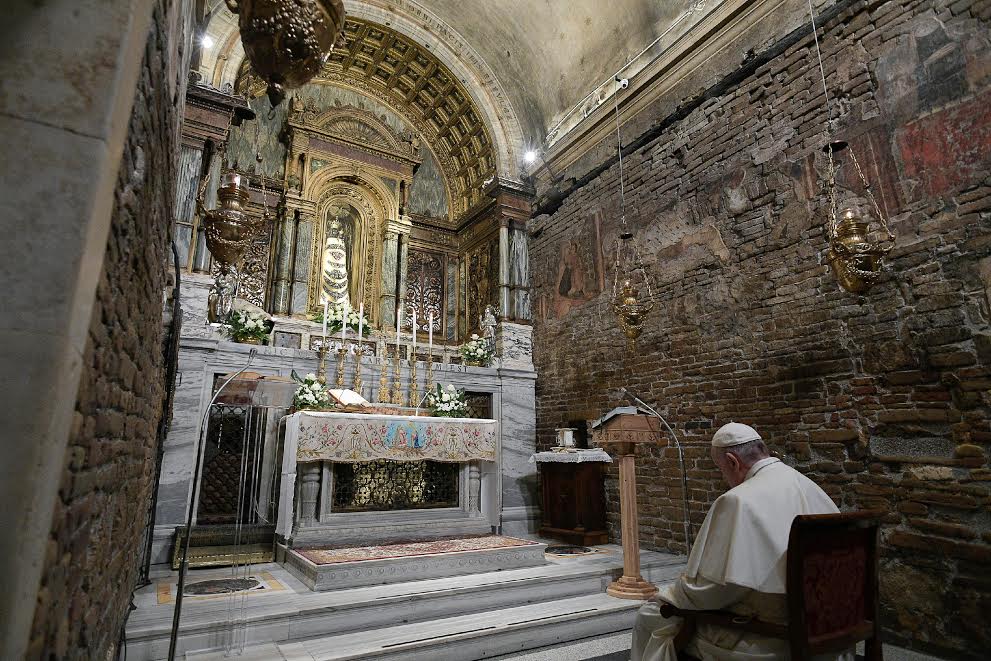“It’s the first time I attend a virtual pilgrimage,” mused Pope Francis, on telephoning the participants in the 42nd pilgrimage of Macerata-Loreto, Italy, on the evening of June 13, 2020.
Given the pandemic, this year young people went spiritually to the Shrine “of the Virgin of Loreto, Mother of Hope, and Mother who helps to look beyond.’ “In these very difficult moments we need to look beyond with hope,” said the Holy Father.
“I am close to you during this virtual pilgrimage and I pray with you and for you, and you pray for me. Have courage! The times that are coming, after this pandemic, won’t be easy, but with courage, faith and hope we can go forward. Courage! Ask the Virgin for this courage today. I am with you in prayer.”
Only 20 young people were physically present in the Marian Shrine. Monsignor Fabio Dal Cin, Archbishop Prelate of Loreto, accompanied them.
Traditionally, tens of thousand of pilgrims from Italy and from abroad follow the road from Macerata to the Marian Shrine of the Holy House of Loreto — Mary’s Nazareth home — during the night, walking some 30 kilometers for five and a half hours.
The Marian Shrine of Loreto is among the most important Shrines of the world. It overlooks the city from the Loreto hill, some 30 kilometers southwest of Ancona, on Italy’s Adriatic coast. It houses the three walls of the semi-troglodyte House of Nazareth where, according to tradition, the Annunciation took place and where the Holy Family lived.
Legend has it that “Angels” transported the “Holy House” from Nazareth to Loreto. Historical research has established that, when the Saracens invaded the Holy Land, the stones were transported by sea by the crusaders in 1291, first to the Illyrian coast and then to Loreto, sheltered by the Papal States, less targeted by pirate raids.
Initially, this holy relic was placed in a simple church, however, from the 14th century on, the House became the object very important pilgrimages, on the way to Rome. Work began on the present Basilica and fortifications to protect it in 1469. In 1507, Pope Julius II decided to continue the works, designating Loreto officially as a place of pilgrimage and sending the Vatican’s architect Bramante to Loreto to direct the last phase of the project.



